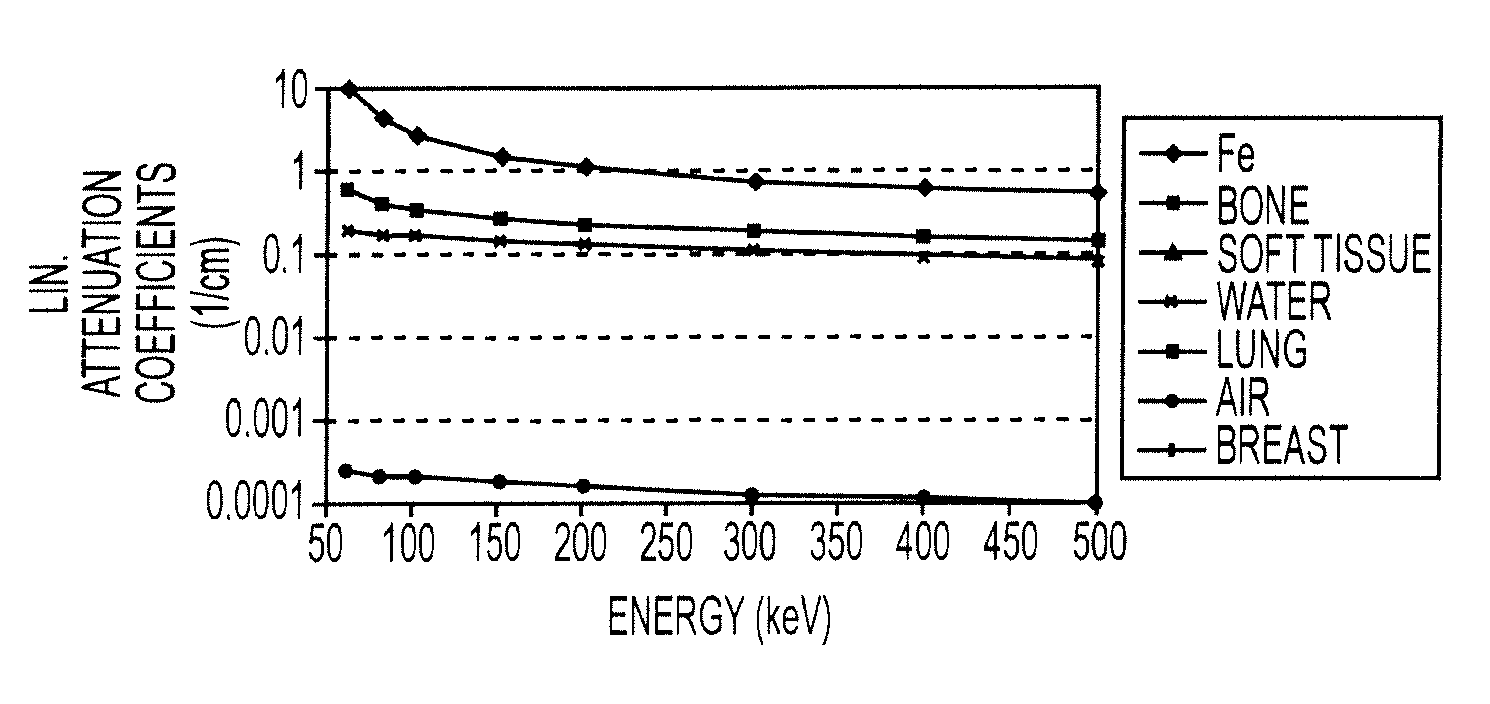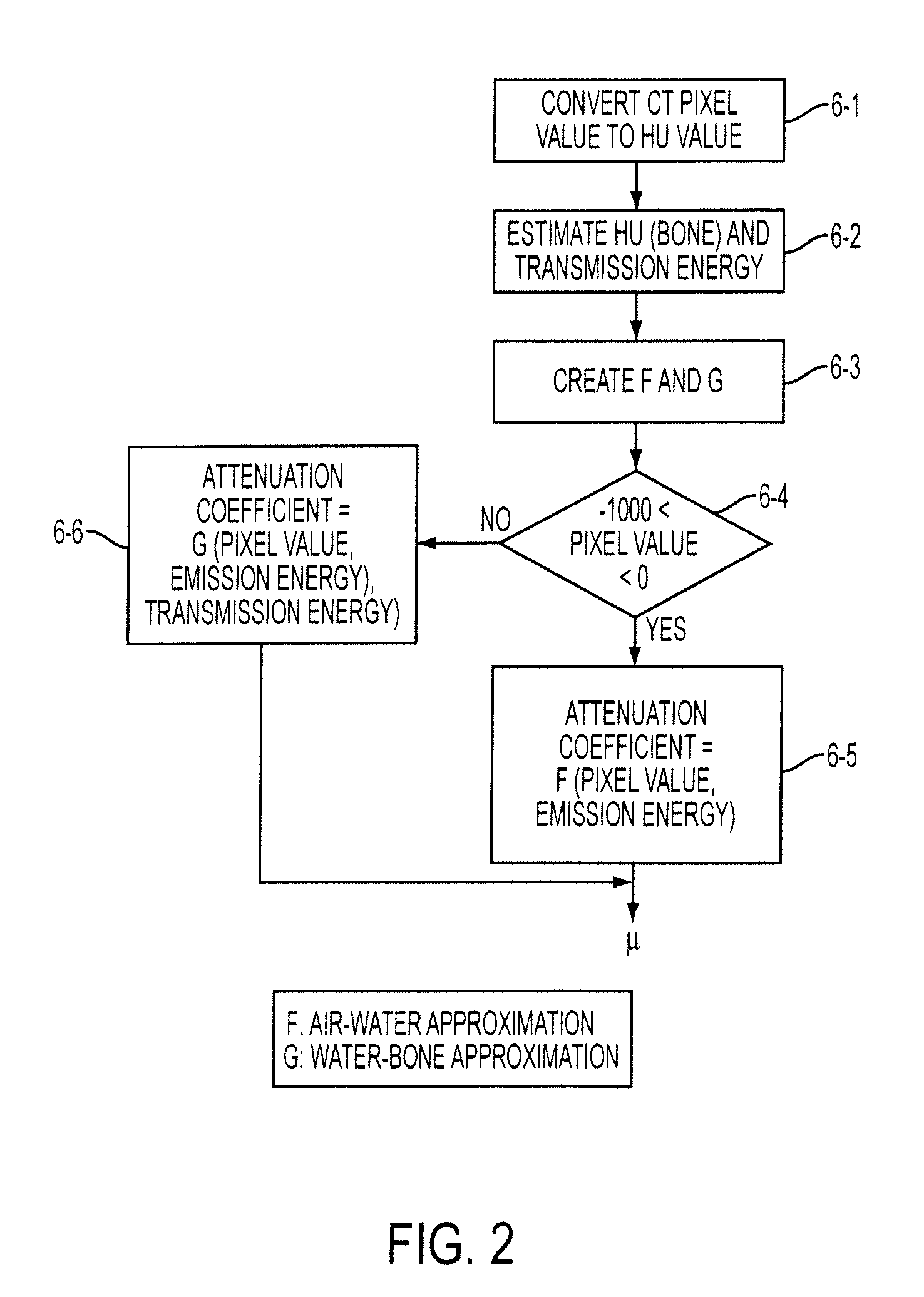Acquisition window compensation for nuclear medical image reconstruction attenuation coefficient maps
a nuclear medical image and acquisition window technology, applied in the field of computed tomography system and method analysis, can solve the problems of difficult measurement of attenuation in emission imaging, difficult to obtain “effective” transmission energy, and no definition of densities greater than
- Summary
- Abstract
- Description
- Claims
- Application Information
AI Technical Summary
Benefits of technology
Problems solved by technology
Method used
Image
Examples
Embodiment Construction
[0033]The basic concepts upon which the present invention builds are disclosed in U.S. Pat. No. 6,950,494 incorporated by reference hereinabove. As explained therein, FIG. 2 is a flow diagram of a method of generating linear attenuation correction factors μ also in accordance with the present invention. It will be understood by those skilled in the art that the following processes may be programmed onto central processor or computer, which may be coupled with a CT scanning device, or which may receive CT data in any fashion. Accordingly, a program written to perform the following may be stored conventionally in memory. Accordingly, the present invention is not limited to any particular system configuration.
[0034]Beginning with step 6-1, CT pixel values are converted to HU values. CT devices may output pixel data a number of ways. Typically, a device outputs data in a proprietary fashion that must be converted to HU. The conversion is usually provided by the vendor. For example, CT d...
PUM
 Login to View More
Login to View More Abstract
Description
Claims
Application Information
 Login to View More
Login to View More - R&D
- Intellectual Property
- Life Sciences
- Materials
- Tech Scout
- Unparalleled Data Quality
- Higher Quality Content
- 60% Fewer Hallucinations
Browse by: Latest US Patents, China's latest patents, Technical Efficacy Thesaurus, Application Domain, Technology Topic, Popular Technical Reports.
© 2025 PatSnap. All rights reserved.Legal|Privacy policy|Modern Slavery Act Transparency Statement|Sitemap|About US| Contact US: help@patsnap.com



